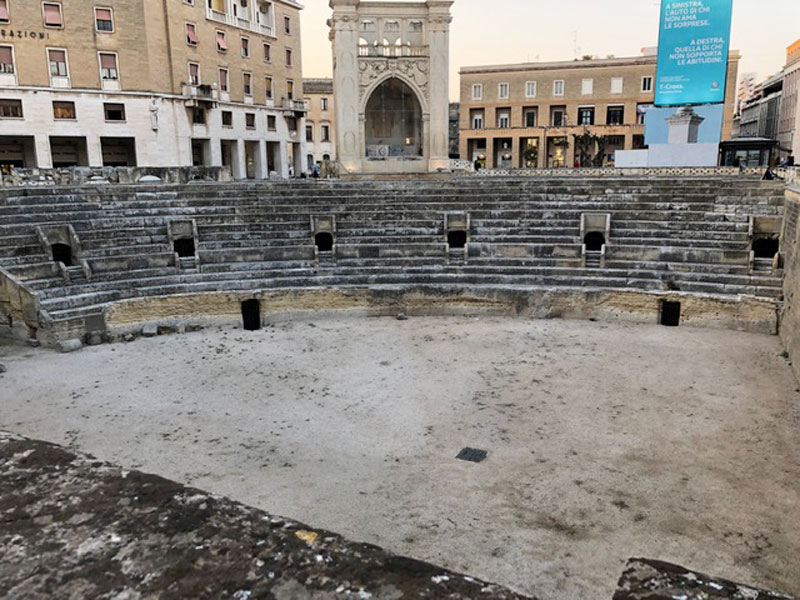A divine favorite: Puglia, Italy
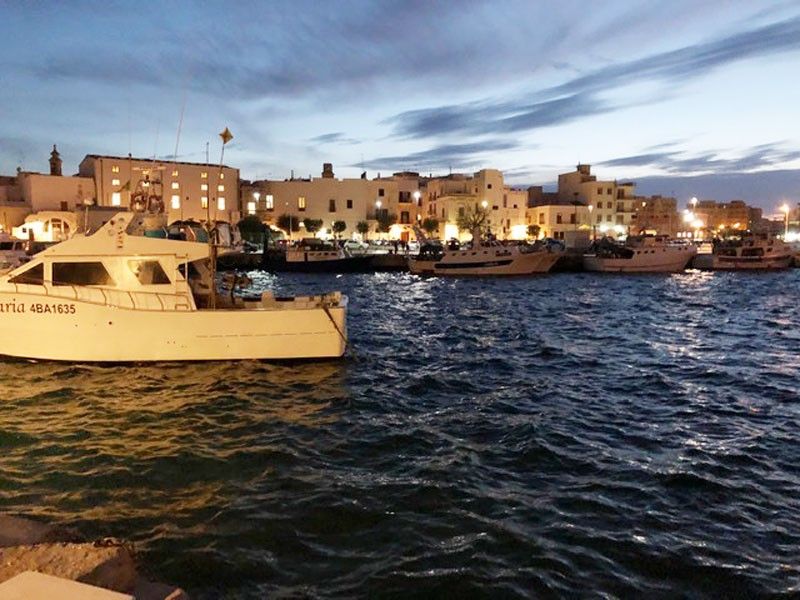
In the areas of beauty and bounty, Italy is superlatively overweight. (Conclusion: God must be — at least — partly Italian.) A case in point: Puglia (or the Apulia region) in the southeastern side of the boot — the heel and the “spur” — is caressed by kilometers-long, cobalt-turquoise Mediterranean waters. Its coastline spreads lengthwise along the Adriatic Sea to the east, the Ionian Sea to the southeast, and the Strait of Otranto and the Gulf of Tarento to the south. The name Apulia may have evolved from the phrase “a fluvia,” meaning land with water.
That is one large source of seafood! Monopoli and Otranto, two towns in Puglia, receive a daily catch of fish, lobster, clams, sea urchin, octopus — eaten raw (crudo) or simply grilled. Charming, white hotels and restaurants are perched on rocks with a panoramic view of the water or lining the accessible beaches.
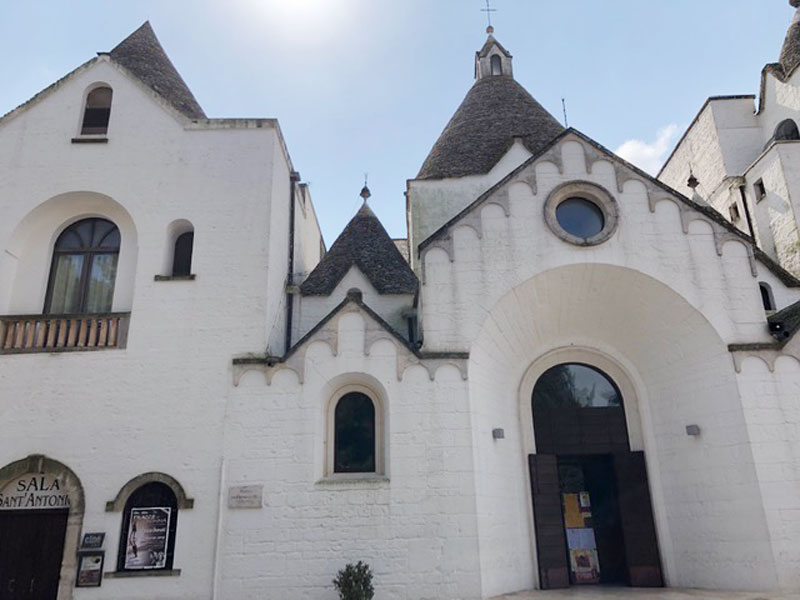
Parrocchia Sant’Antonio di Padova, Alberobello is the only trullo Catholic church in the world. The sala of the parish used to be a convent, but is now a bed and breakfast.
Second only to Spain and providing 40 percent of Italy’s production, Puglia has 60 million olive trees, with 500 different varieties, many of them with thick, gnarled trunks hundreds of years old. Almond trees, from which artisans make sweets like dolcetti di pasta di mandoria (almond paste cakes) and dreamy, sugar-covered almonds, are also numerous. Vineyards produce excellent reasonably priced local wine, called Primitivo. Puglia’s numerous agricultural products are distributed to the rest of Italy with pride.
Alberobello, a UNESCO World Heritage site, is famous for its 14th-century houses with conic roofs. The shape efficiently collects water and keeps the structure cool even in the summer. From the Greek word trullo (cone), the oldest area contains about 400 trulli, where people still live today. In Rionemonti, there are 1,000 trulli with the only trulli Catholic church in the world.
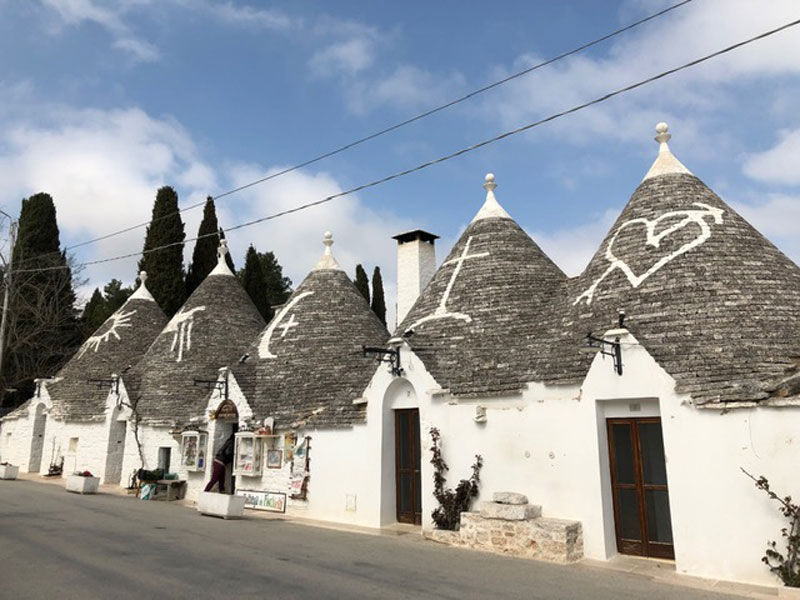
Different pinnacles atop the trulli were made by trullaro, the worker who made them. Many of the symbols may have had a Turkish influence. The moon, it is said, refers to women or Mother Earth. The plus sign stands for fertility. The sun could be interpreted as the great light of God.
In available records, it is said that a Count Giangirolamo allowed peasants to build these huts and pay him rent, using only dry limestone and karst. The stones are piled on top of one another without mortar. This was the way the Count avoided paying taxes to the Spanish Viceroy of the Kingdom of Naples. When the Viceroy sent tax inspectors to audit the Count, the peasants simply and easily dismantled the huts.
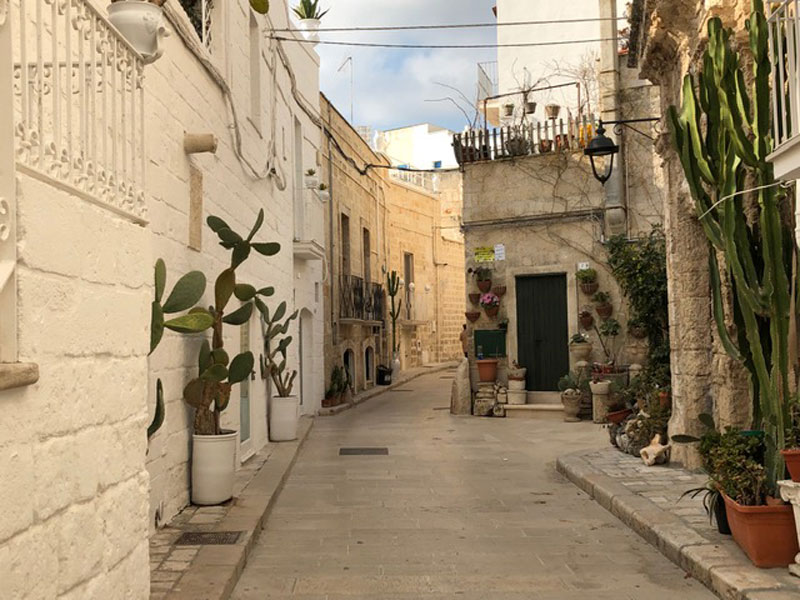
Charming white houses on the tiny streets of Monopoli. Only the (tiny) cars of residents are allowed. Tourists need to pull their luggage from the entrance of the walled town.
The word “alberobello” means the land of battles, because the locals fought to gain their freedom from the Count. Finally, in 1797, in response to the petition of three civilians and four priests, King Ferdinand IV of Bourbon declared that the peasants could legitimately use mortar and, therefore, live permanently in Alberobello. This ended the unpopular Count’s fiefdom.
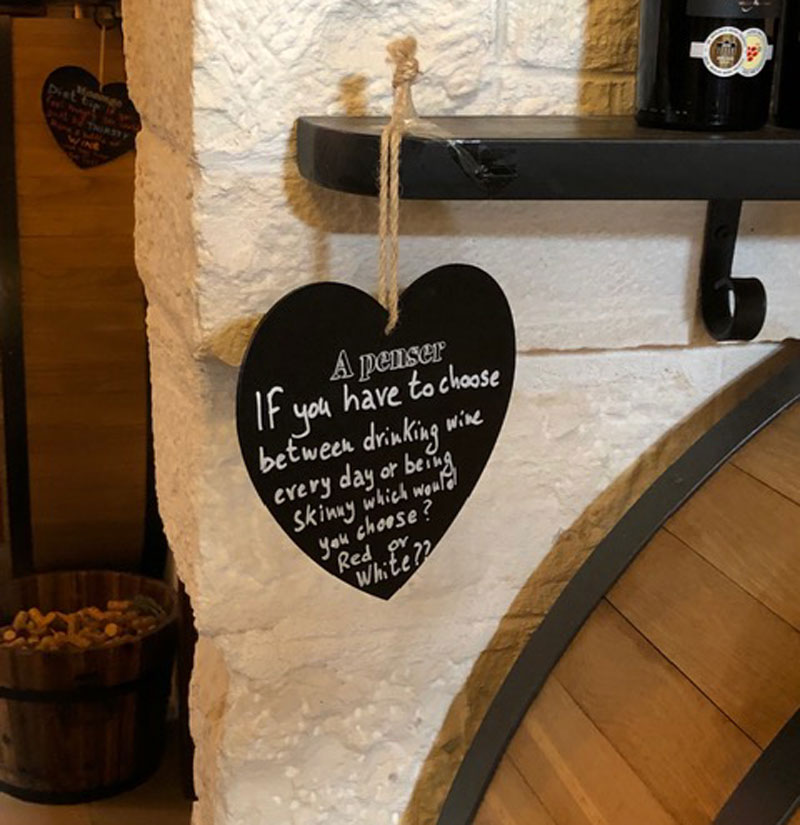
An enoteca in Alberobello, with a sense of humor.
Lecce is called “the Florence of the south” because of its beautiful baroque monuments. Legend has it that Lecce existed even before the 3rd century BC. It has an amphitheater that used to seat 25,000 people, but is now much smaller. Numerous churches, many across from each other, are witnesses to the people’s faith.
Retail therapy can be found in Lecce’s many boutiques that sell clothes, leather goods, jewelry, truffles. The old part of town has numerous restaurants and pastry shops — a satisfactory ending to the experience of Puglia, truly a hidden gem and, surely, a divine favorite.
